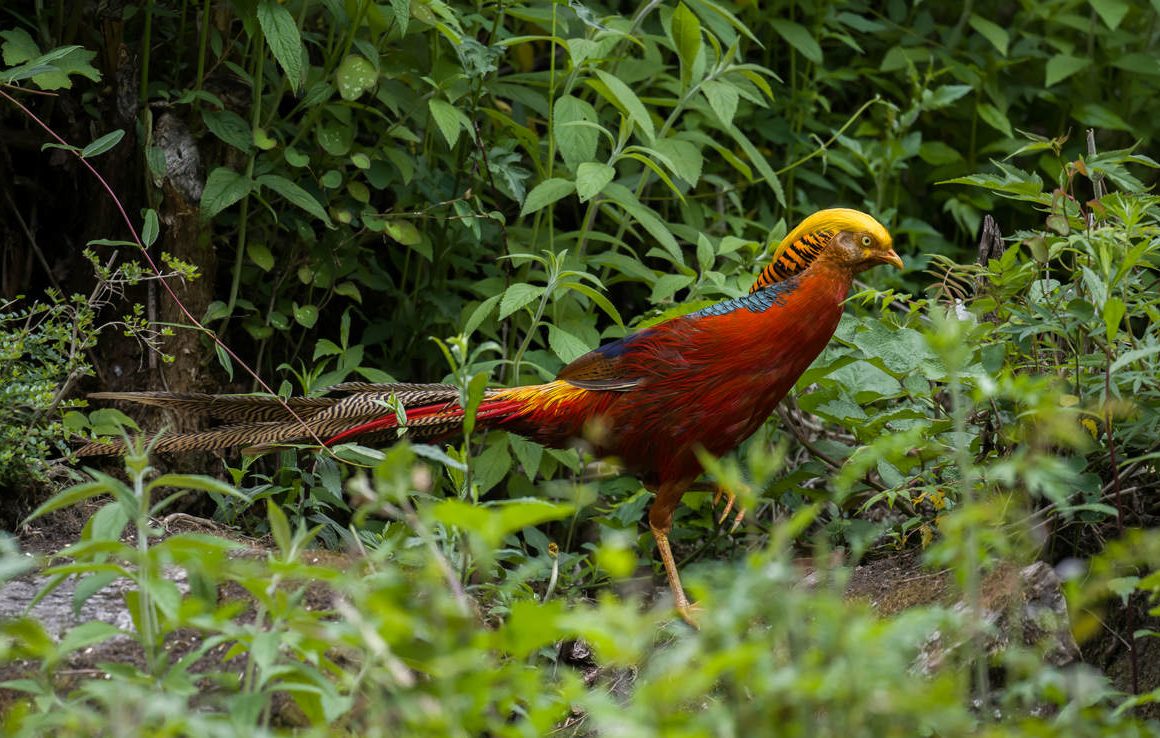
The full scientific name of the Golden Pheasant is Chrysolophus pictus, with the “Chrysolophus” part meaning “with golden crest” while “pictus” means painted. That sounds like a sensible name, but then again, Lady Amherst’s Pheasant (the subject of an earlier post) is also in the genus “Chrysolophus” despite not having a golden crest at all.
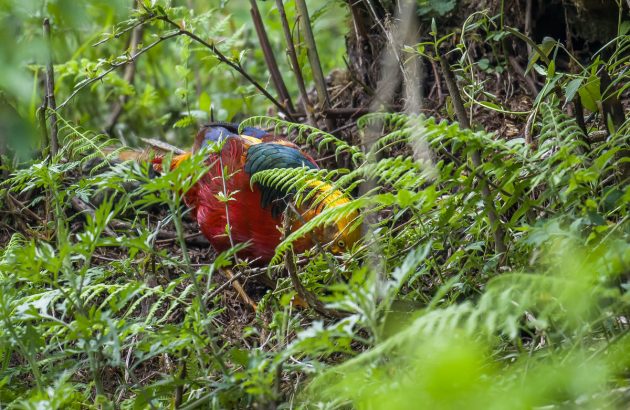
An organization called the Carolina Avian Research and Education states that “if you google the top ten most beautiful birds in the world, it [the Golden Pheasant] always makes the list.”
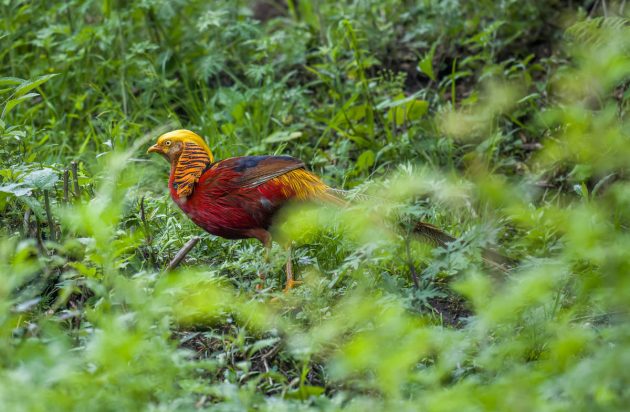
True or not? Having once been burned by wrong information on the internet, I decided to check this for myself. Here is the result of the first few websites that a Google search brought up:
A-Z animals: Not included in the top 10
The Mysterious World: Included and taking the No. 1 spot
The Coolist: Included in the top 10 (no specific order)
World Web Times: Included and taking the No. 1 spot
Sprintally: Not included in the top 10 (despite some rather broad “bird species” making into the list, e.g. “kingfisher”)
Chipper Birds: This is a list of the top 30 but the Golden Pheasant is listed as No. 3, so, yes.
Tajbirds: Included at No. 6.
Bscholarly: This is a list of the top 12, but the Golden Pheasant lands the top spot, so yes.
Styles at Life: Yes, included. But the list also includes the Mute Swan, which I personally find quite ugly …
Allabouttopten: Yes, included – bonus points for including the Black-naped Monarch, though some of these bonus points are immediately deducted for using the name “black-naped blue flycatcher”
Webspy: Included, and with a clear statement – “it is the most beautiful bird in the world in 2023.”
Owlcation: Included at number 7 but species may not be listed in any particular order.
Legit: Included and taking the number 2 spot.
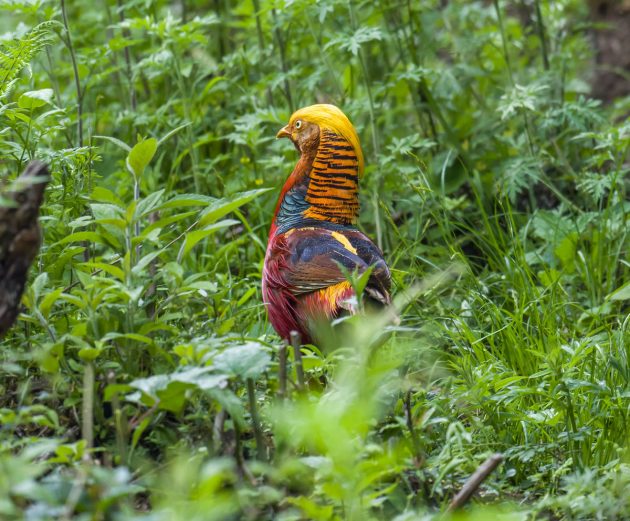
There are many more such websites, but looking at them it gets boring very quickly. So, here’s the result: Out of 13 websites, 11 include the Golden Pheasant in their top 10. And I learned that there are many more useless websites than I ever thought possible.
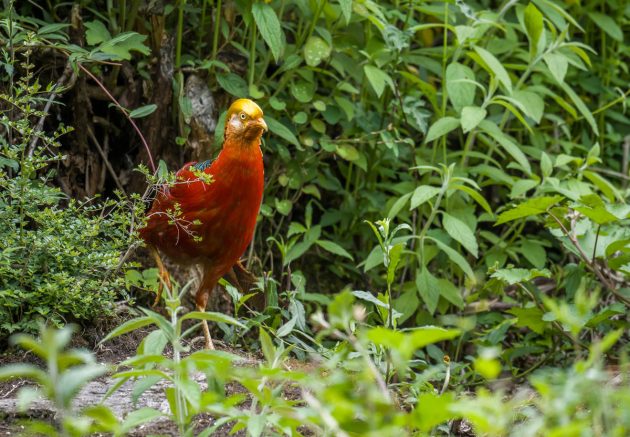
For good measure, I also asked ChatGPT about the 10 most attractive bird species – it does not include the pheasant but thoughtfully warns that “the concept of attractiveness can vary from person to person” …
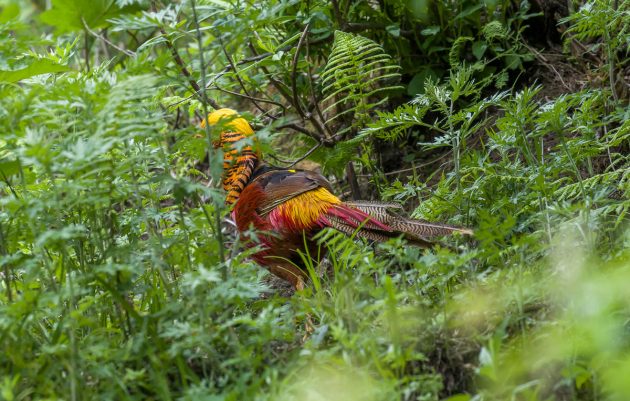
Anyway, first-year male Golden Pheasants show a mix of male and female features and are rarely selected as one of the top ten most beautiful birds.
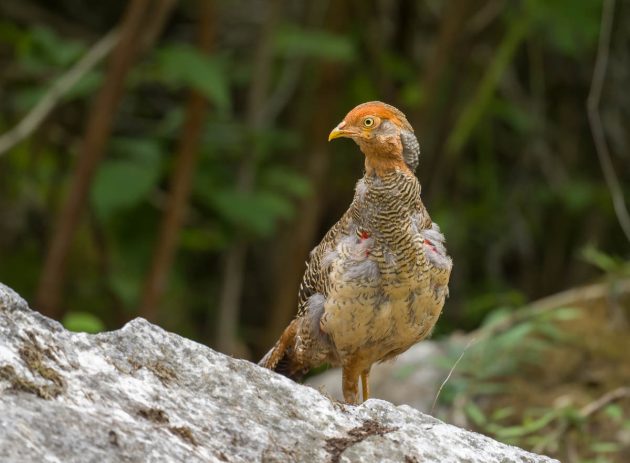
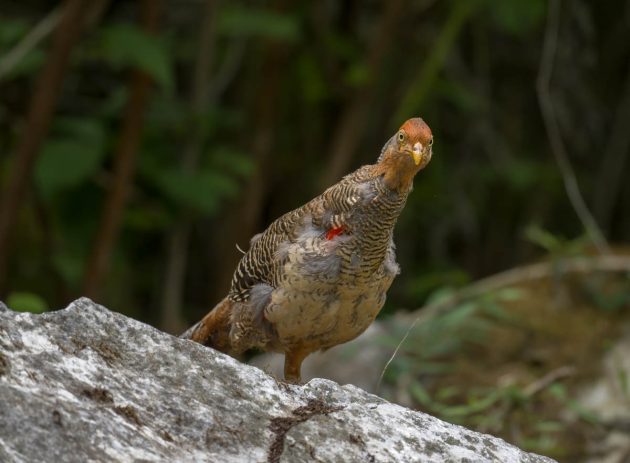
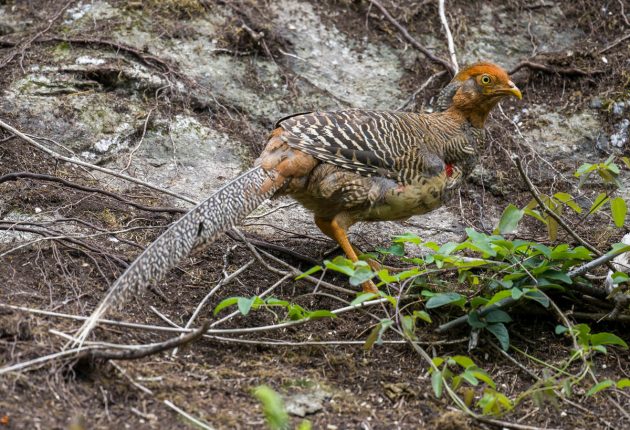
But the looks of the adult male Golden Pheasant make it an attractive bird for animal parks, zoos, and similar places – for example, it has its own webpage at Seaworld and at a place called Marineland on the Cote D’Azur.
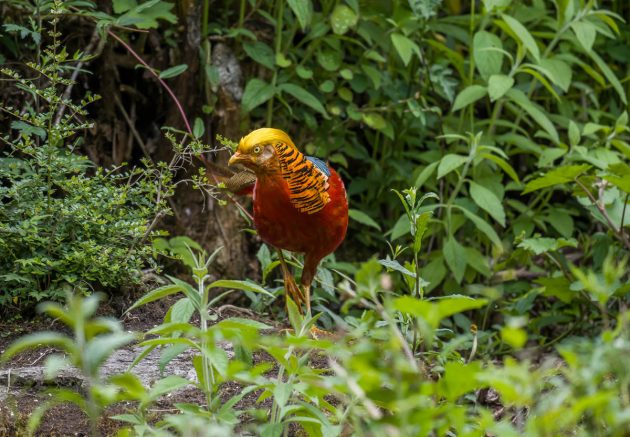
I guess in China, there is always money for research related to Giant Pandas. One such study looked at the attention the pandas pay to different species, using eye-tracking technology. It turns out the pandas are not very interested in Golden Pheasants despite their position among the top 10 most beautiful bird species.
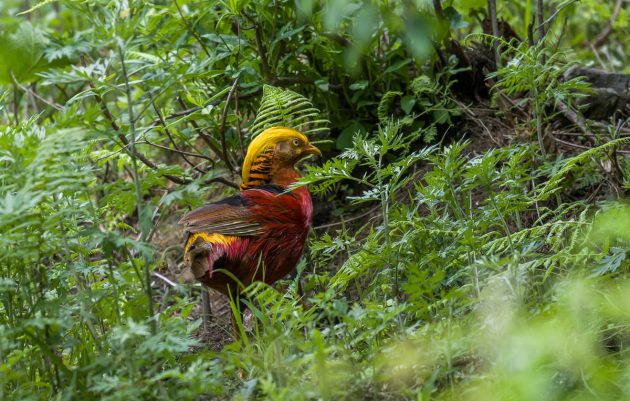
Those readers with slightly morbid interests might want to seek out a paper in the Turkish Journal of Veterinary and Animal Sciences describing the case of heavy mixed infection of Golden Pheasants by Heterakis isolonche and H. gallinarum (source). Complete with color pictures of the infected areas – perfect for printing out and decorating living room walls.
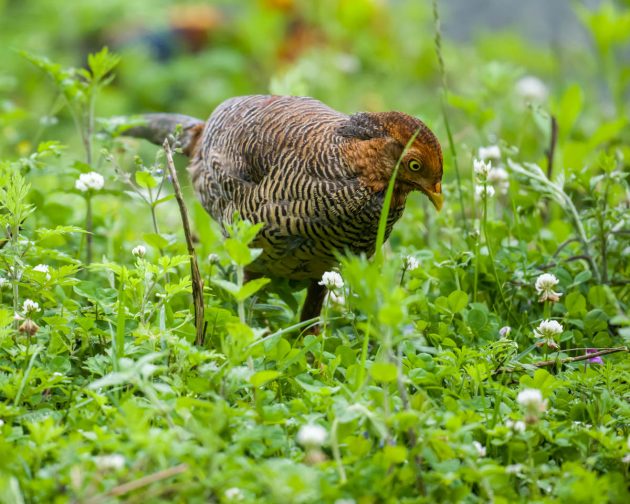
Sadly, the HBW states that Golden Pheasants are considered an expensive delicacy in restaurants.
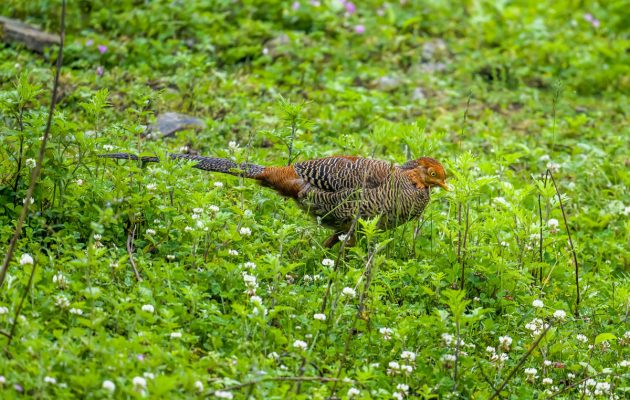
When looking for literature on Golden Pheasants, I stumbled across a thesis titled “Golden Pheasants and Eastern Kings: The German District Administration in the Occupied Soviet Union, 1941–1944”. While this was unlikely to lead to any bird-related information, I still needed to figure out what the term “Golden Pheasant” stands for in this non-avian context.
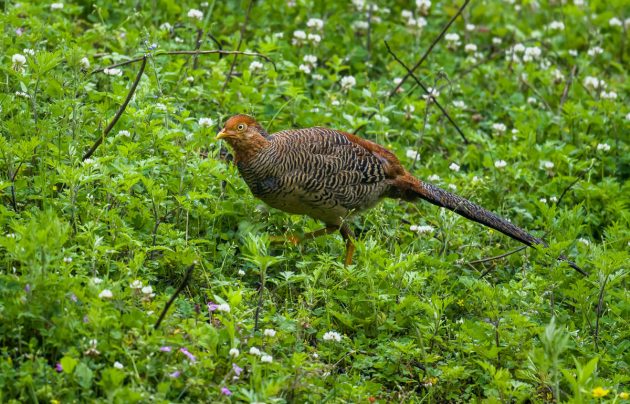
A footnote in the thesis provides an answer: “‘Golden Pheasant‘ (Goldfasanen) was a derogatory term to describe the civil administration [of the areas occupied by the Nazis]. The phrase itself referred to the yellow-brown uniform … It was also used to describe long-time Nazis who were given important positions in the Party or one of its organizations.” (source: Fritz Hillenbrand, Underground Humour in Nazi Germany: 1933-1945, Routledge: London).
And the main text of the thesis explains: “Overall, these ‘Golden Pheasants‘, as they were referred to by military personnel, indiscriminately plundered the local population and displayed a keen taste for vodka, women and public executions. In short, the civil administration was supposedly composed of ‘blockheads and ass-lickers, ‘drunk on power.'”
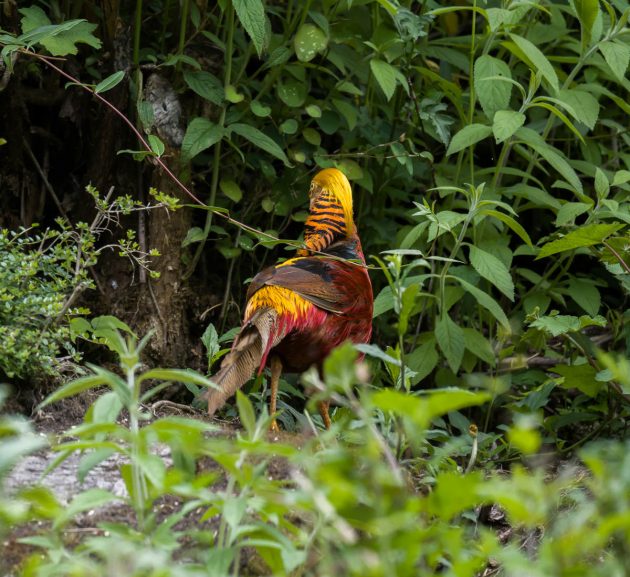
Another use of the bird name is to describe wealthy potential donors, which a clergyman collecting funds for a hospital thus described as his “Golden Pheasants” -as published in the journal (?) “The Hospital” in 1890 (source).
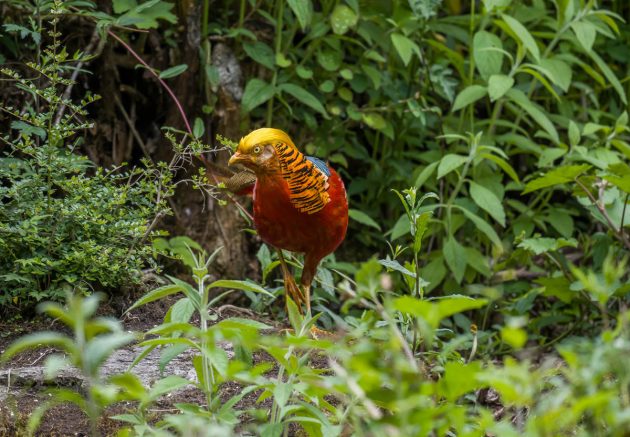
One British birder describes the decline of the Golden Pheasant in Britain – where it had been introduced in the late 19th century – and ends this with the statement that as a consequence of the presumed extinction, “Golden Pheasant will thus represent a true blocker on the British and Western Palearctic lists in years to come”. The strange thinking of listers.
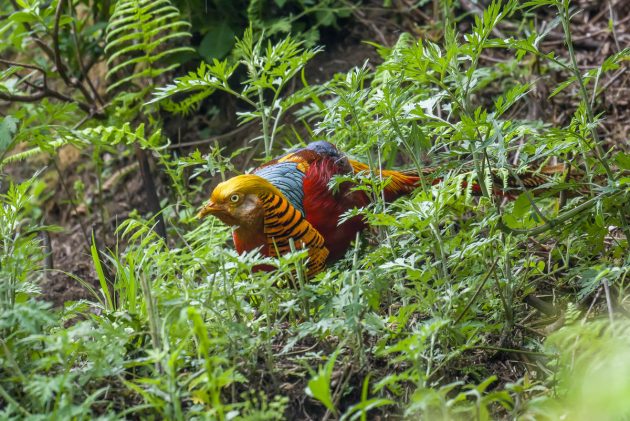
Apparently, in Chinese culture, the Golden Pheasant is thought to be the ancestor of the phoenix and represents auspiciousness (source).
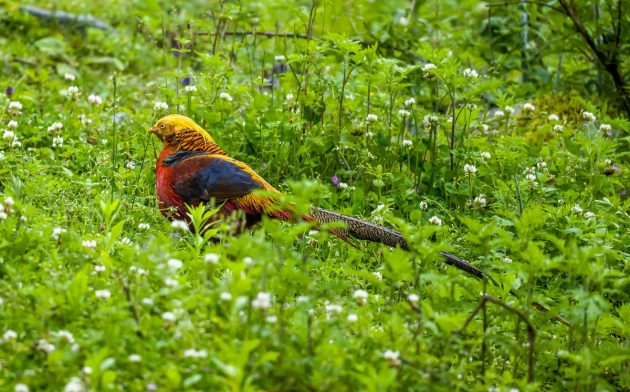
Some researchers presented Golden Pheasants (and two other species, the Chukar Partridge and the Ring-necked Pheasant) with a novel object (a white tennis ball – the researchers were Australian, so maybe one left over from the Australian Open).
The Golden Pheasants were the ones least likely to approach and react to the tennis ball. Within the species, reactions were stronger by males, by groups of birds rather than individuals, and by captive birds. In science speak, this then results in the following conclusion:
“Results from individual subject tests were interpreted as reflecting species-specific approach/avoidance behaviors. Group patterns of behavior were interpreted as reflections of normal responses to novel situations in the birds’ realm of experience with conspecifics.” Sounds more sophisticated, right?
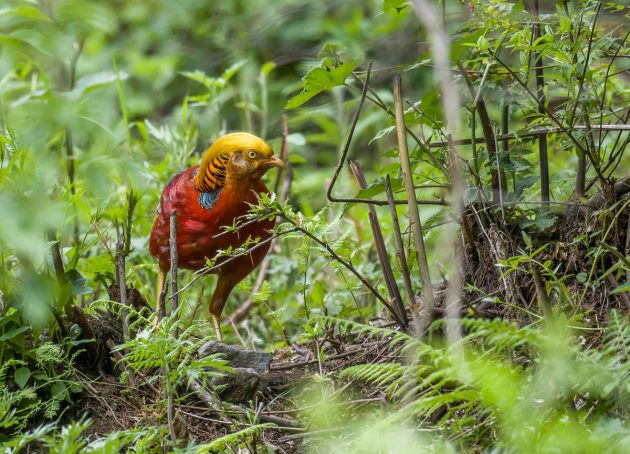
Jennifer Hill acquired her Ph.D. in biology at the University of Mexico looking at sexual selection in Golden Pheasants. She found that the females prefer males with full adult plumage rather than the one-year males, and males with longer cape feathers. And among the males, male spur length was the best indicator of the standing of a male in the hierarchy.
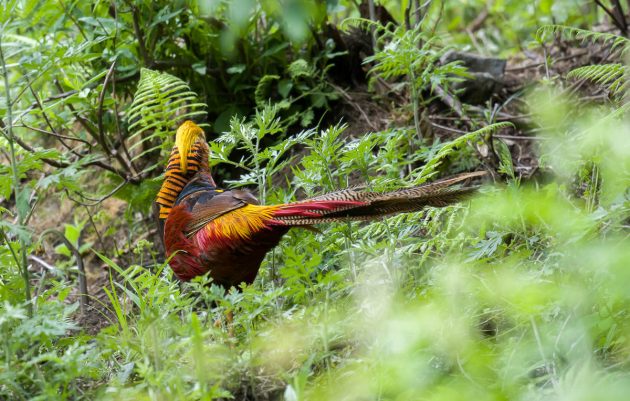
It sounds kind of obvious, but scientific rigor requires to prove the obvious as well. So, research found that the flight initiation distance of adult male Golden Pheasants is consistently longer than that of the better-camouflaged adult females and juveniles of either sex. And indeed, it was easier to get photos of the juvenile male than of the adult male, though I thought this was due to the greater stupidity of the juvenile rather than its less brilliant appearance.
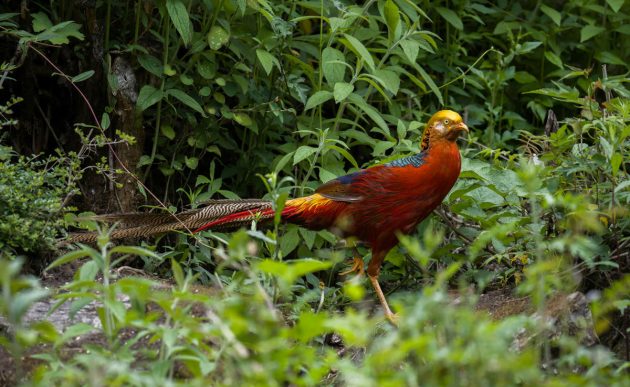
And finally, if Golden Pheasant parents want to frighten their chicks, they tell them the true story of a Great Grey Owl attacking captive pheasants.
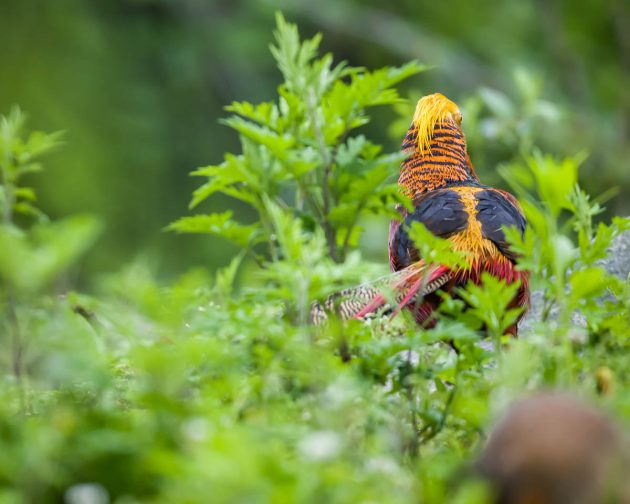













Leave a Comment